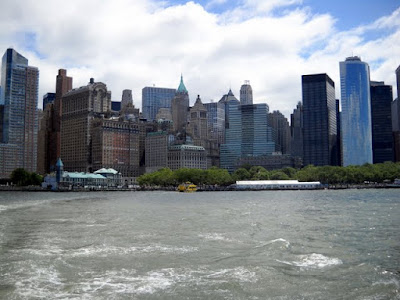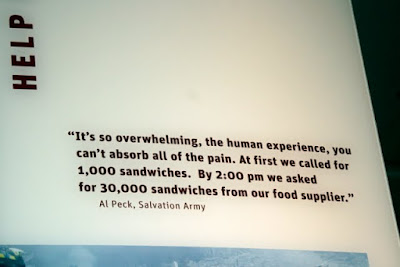Built in 1822, the lighthouse was constructed of native limestone on the tip of the peninsula. Through the years, 15 lighthouse keepers have tended the beacon--two were women. The first keeper was Benajah Wolcott, a Revolutionary War veteran. First lit by whale oil and later kerosene, the light was electrified in 1923. It still serves as a warning to ships on the lake. Nearby Sandusky and Toledo, as well as the limestone quarries on the peninsula, attract commercial shipping vessels even today.

After viewing the lighthouse, we spotted this baby skunk in the rocks at the edge of the peninsula. We later saw three young skunks feeding nearby. Thankfully, they haven't learned to be afraid of humans and cameras.

Before returning to our trailer, we went shopping at Walmart. There is obviously an Amish community nearby. We saw Amish women inside, shopping for food and other supplies. These Amish young people were waiting outside.

Our state park wasn't full, by any means. But there were lots of families with children and lots of tent campers. Just down from our space there was a family with three generations of campers in one large tent. Right next to it they had set up a cooking shelter with screen sides to keep the bugs at bay. The sites don't have water hookups, so they were using a large bucket to collect their water. Their biggest convenience was an apartment size refrigerator, as well as a smaller refrigerator that held bottles of water, and possibly soft drinks. We have seen RVers with small freezers before, but never full-blown refrigerators in a tent site. The family was staying at least two weeks, maybe longer, since we don't know when they arrived.
In another loop, we saw this campsite.

At first we thought maybe they were having repairs done inside. But when we realized there was no furniture on the lawn, we decided it was just a very junky campsite. Why did the campground allow it? Maybe that explains why the restrooms were in the condition they were.
As this sign warned, there were lots of children there. At one camp site across the road from ours, we counted 15 bicycles! The children were flying here and there, through empty campsites and up and down the rows. But they were quiet. Here is one of the many families out biking. The park has lots of great trails.

Because the sites had only electric hookups, the ever reliable blue-boy tank was visible all around the campground.

In the campground maintenance yard we saw this boat. What do you suppose it gobbles up in those huge jaws?

About 18,000 years ago glaciers in the then-current ice age scooped out the basins for the Great Lakes. Grooves cut by those glaciers are visible in the area, including in East Harbor State Park. This is a shot of some of those grooves.


























































